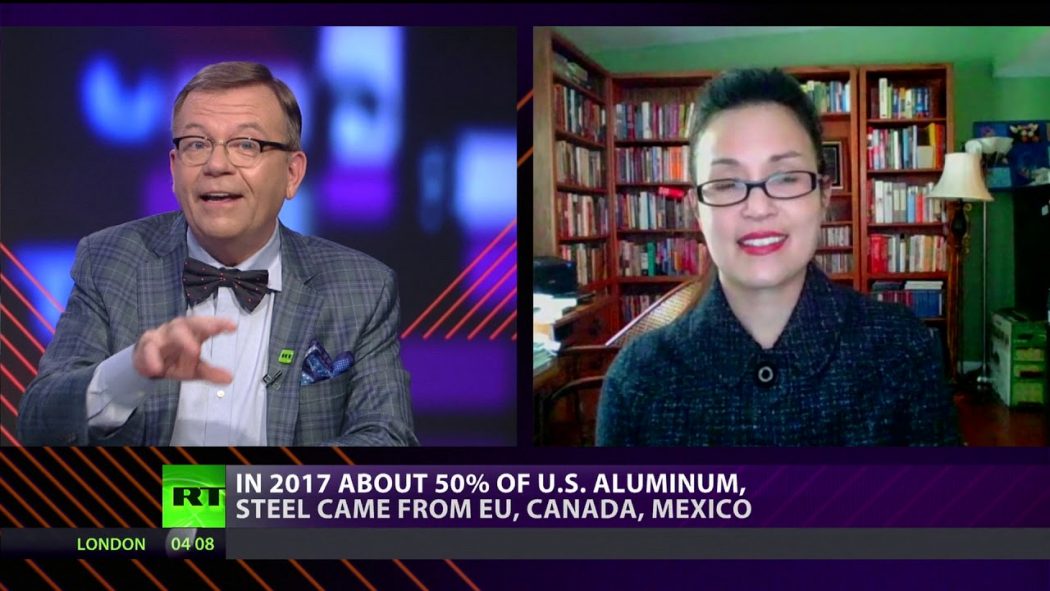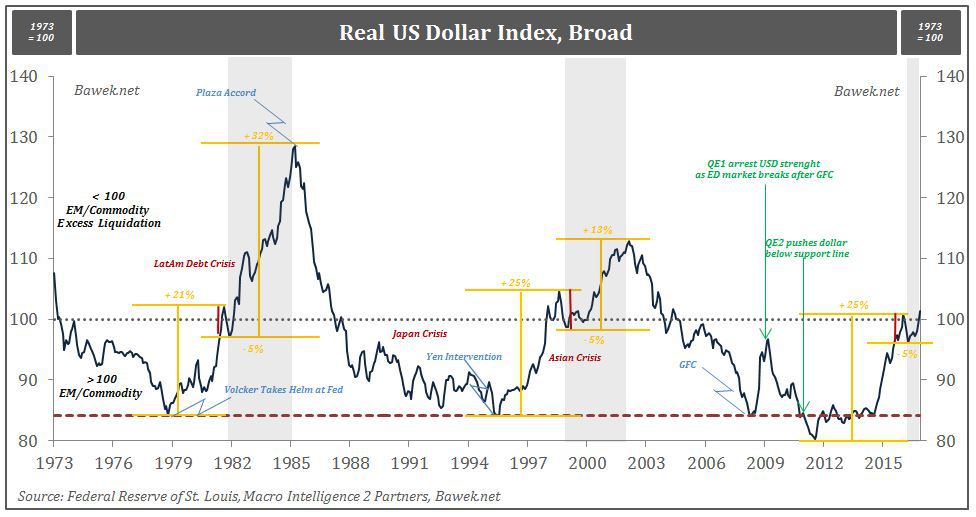The Western media was incredulous. The Donald had disregarded diplomacy, scuttled out of the G7 meeting in Canada without endorsing the G7 agreement, and ended up shaking hands with a previously avowed enemy in Singapore. The formally leisurely pace of global diplomacy, where all is pre-agreed before the photo-op showing unanimity of leadership, was ditched in favour of the Art of the Deal. Foreign correspondents for the established media were confused and obviously out of their depth, particularly over the deal with President Kim Jong-un.
As a female journalist pointed out at the press conference after the meeting, Kim has proven to be ruthless and untrustworthy, killing members of his own family and imprisoning and torturing his own people. How could Trump possibly come to terms with him, and concede, apparently without consulting South Korea, to suspend joint exercises, and agree to the objective of a complete denuclearisation of the peninsular, which is the implication of the eventual withdrawal of American forces entirely from the South?
The Singapore deal was in fact not a deal, but an endorsement of the earlier agreement between the two Koreas at Panmunjom on 27th April. And this is the point, Singapore was the US confirming it accepted Panmunjom.
The razzmatazz of a Singaporean summit plays well to Trump’s electoral base, as did his disdain for G7 and his trashing of Trudeau, who he described as “very dishonest and weak” over trade. Trump’s supporters also buy into his fake-news accusations, conveniently placing him beyond criticism so far as they are concerned. Now they are seeing concrete results from the man they elected President, ahead of the mid-term elections in November.
We need to look into the North Korean situation with greater objectivity, before commenting on recent trade policy developments.
Korea and its economic role in Asia
The Panmunjom Agreement was an agreement between the two Koreas only. No other powers are a party to it. That was why Singapore had to endorse it, China having already done so. Essentially, it was the graceful way for everyone to back out of an intractable position, dressed up as a victory for Trump, whereas in truth it is also a thorn in China’s side being removed.
North Korea has a far longer border with China than with South Korea. Having a totalitarian state on her eastern flank was never ideal, even though it acted as a buffer between China and the Americans in South Korea. The similarities with the earlier case of the Iron Curtain in Europe in the late eighties are striking. On one side there was growing capitalist prosperity, widening the gulf with socialist stagnation on the other. China could tolerate it today, but Kim would have been increasingly aware that time was running out for his government, just as Secretary-General Gorbachev recognised it when he proposed the historic meeting in Reykjavik with President Reagan in October 1986.
Events at that time moved quickly, even though the Reykjavik meeting ended without a formal agreement. Twenty-five months later, the Berlin Wall dramatically fell, symbolically marking the end of seventy years of Soviet communism. Those same economic tensions exist between China and North Korea today. North Korea’s bankruptcy means that it has not the economic resources to continue with its nuclear program to credible effect. Kim was forced to come to an agreement with China as a way out of his difficulties, and that is why he visited Beijing to meet President Xi one month before Panmunjom.
Trump’s Singaporean summit was an admission that China holds the winning cards over Korea, and that America will be forced to withdraw its military from the East Asian landmass. It signals something else, and that is the neo-cons have lost much of their influence in Washington. Trump is succeeding in bringing the administration under his control with respect to foreign policy. We see this with the court cases over Russian interference in the presidential election fizzling out, and attention switching towards allegations against the Clintons. Rather cleverly, Trump is manoeuvring himself into a convincing position ahead of the mid-term elections.
So far as China is concerned, it is also a strong win. In the east, at least, she has secured herself against a US military presence, which will retreat to Japan and her islands. And even Japan realises her future is increasingly China-related. The industrialisation of North Korea will bring significant economic benefits to China as well, just as the development of Eastern Europe did to Germany.
Trade tariffs
There seems little doubt that Trump is playing the trade tariff card strongly, because of the mid-term elections. Recently I was on a television panel with Steve Malzberg, the American journalist and TV presenter close to the Republican camp, who was adamant that Trump was just delivering on his election promises.[i] It is important to understand this is his overriding motivation, but it is not necessarily the advice he gets from Larry Kudlow, his economic adviser.
Kudlow was an economist in the Reagan administration, with Professor Steve Hanke of John Hopkins University. Hanke wrote a Forbes article at the time of Kudlow’s appointment, pointing out that he, Kudlow (and also Reagan) were free-traders. Hanke’s knowledge of Kudlow’s true understanding of economics is personal.[ii] We can therefore assume that Kudlow would have informed Trump of the errors of tariffs, which are not difficult to explain and understand.
Trump’s spats with Canada and the EU over tariffs at the G7 were interesting in this regard. Trump was talking about tariffs imposed against America being an obstruction to free trade, a subtle but important difference from his protectionist trade policy originally set out as central to his mandate to Make America Great Again. There is further evidence of this from part of the transcript of an interview Kudlow gave on CNN on 10th June:
TAPPER: We acknowledge that free, fair and mutually beneficial trade and investment, while creating reciprocal benefits, are key engines for growth and job creation. We strive to reduce tariff barriers, non-tariff barriers and subsidies. We call for the start of negotiations this year to develop stronger international rules on market-distorting industrial subsidies and trade-distorting actions by state-owned enterprises.
That is what President Trump believes in.
KUDLOW: Yes.[iii]
There can be little doubt, based on the events at G7 and Kudlow’s comments, that Trump has indeed quietly modified his position on trade. And it is notable that his intended introduction of tariffs against China focuses on products that the Chinese will support under their “Made in China 2025” policy. This policy, which has similarities with Germany’s “Industry 4.0” plan adopted in 2013, is broader. Germany’s plan was to encourage SMEs to interconnect in their production chains in order to improve output, quality and production efficiency. China’s plan is to do the same, and also to improve intellectual property protection for SMEs. The state will provide up to 40 innovation hubs, but companies will be encouraged to operate on more market-based standards. In the context of a mercantile economy, this policy is designed to ensure the country’s industrial sector is world-standard for not only China’s growing middle classes, but also competitive abroad in terms of quality rather than on price.
The problem with it is America’s suspicion that the 2025 policy is intended to be protectionist. A target in the plan is for 70% “self-sufficiency” in components in advanced technologies. Foreign-owned manufacturers may feel shut out of production chains except for minor roles. Chinese corporations are also actively acquiring foreign-owned businesses for their technology, which can then be transferred to China. Allegations over state-sponsored behaviour include forced technology transfer agreements, commercial espionage and patent infringements.
Trump is promoting his trade war with China as against trade that is not free, whereas the issue is considerably more complex. Trump was elected on a protectionist ticket, while China has benefited from free trade. Trump was elected as a nationalist, while China merely has a national strategy. That strategy is to evolve her economy from being a manufacturer of standard goods to become the Germany of the East – hence the interest in Germany 4.0. By 2025, China intends to have only a residual interest in her current export lines to the US, and all foreign manufacturers will have relatively free market access to China’s markets for finished products. But with China’s 45%-50% savings rate, even if the 2025 plan did not have the 70% self-sufficiency target in place, it is hard to imagine in practice it would be any less.
The Chinese could therefore easily concede this target and be persuaded that aggressive moves to transfer technology and infringe international patents are unnecessary. That is the climb-down Trump presumably aims to achieve. But he has to be careful, because American corporations have much to lose. Already, US based manufacturers of goods incorporating tariffed steel and aluminium have been placed at a disadvantage against foreign competition. General Motors, Ford and Chrysler may now find it more profitable to beef up their Mexican operations for export-related production, relative to existing facilities in the US.
By 2025, the really serious game on the world stage will be a Eurasia-wide infrastructure play with a market currently covering 4.62 billion souls (67% of the global total), where China and Russia will be the ringmasters. There is nothing, short of a nuclear war, the US Government can do to stop it. That is the reality that is now accepted in Washington, and perhaps in Langley as well, given that the stuck-in-the-mud neo-cons are now being side-lined.
That being the case, will America retreat into isolationism, or does she, through realistic foreign policies, maximise the opportunities for US-owned businesses in Asia? These outcomes are very different. That make-your-mind-up-time for America is rapidly approaching, and surely, the Donald knows it. He needs to back down from trade wars even more than China.
[i] See https://www.youtube.com/watch?v=Ym97H2jU5Eg
[iii] See http://transcripts.cnn.com/TRANSCRIPTS/1806/10/sotu.01.html.


